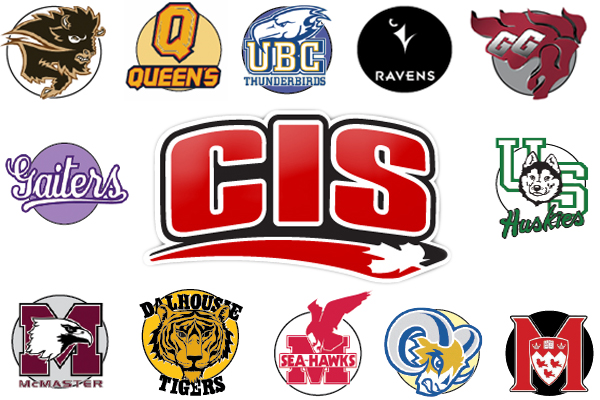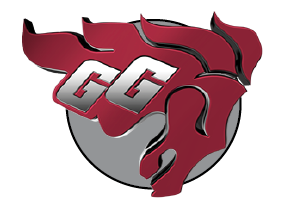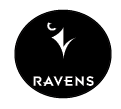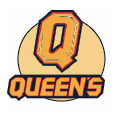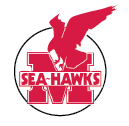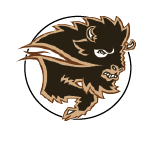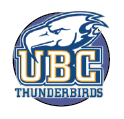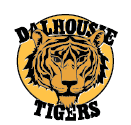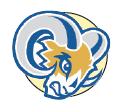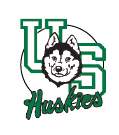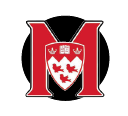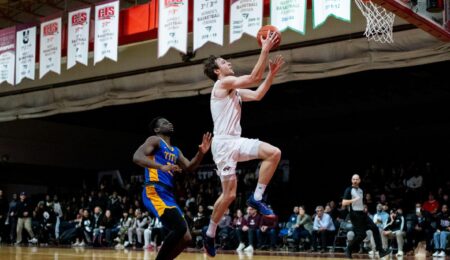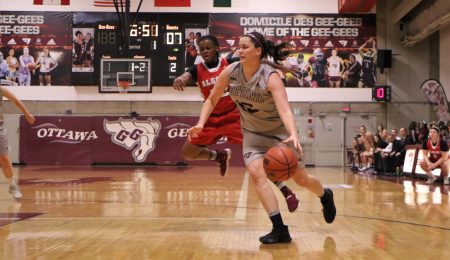Students always ask about the history of their school, and who might have thought of representing the University of Ottawa with a horse. What the hell is a Gee-Gee and who thought of making this the symbol of pride for our athletes and students? Other universities across Canada have a deep history of how their logo began. Good or bad, these logos have stuck with their universities for decades.
uOttawa Gee-Gees
Believe it or not, the University of Ottawa has not always had the Gee-Gee as its mascot. This arose as an afterthought once the university was truly well and underway. Established in the 19th century, the university and its athletics have been closely tied for the better part of 200 years, and the teams have always proudly harboured the school’s iconic garnet and grey as its official colours. This extended to the university’s bourgeoning varsity program as local newspapers began to take an interest in the program’s setup. In fact, it was actually local newspapers who nicknamed the team the “GGs” in reference to the school’s colours. It wasn’t until much later around the 1970s that the university officially adopted the Gee-Gee as an official team name and forged a logo with the eponymous pace-setting horse in classic Ottawa garnet.
—David Agbaire
Carleton Ravens
In 1948, the Charlaton College student newspaper published a football article that included the name “the Ravens” without any explanation. For many years, Carleton University used a pretty underwhelming logo of a plain black raven in flight. The logo was outdated, and almost begging to be scrapped in the near future. 2013 brought the return of football to Carleton, and also a new logo. A black backing (a shield-like shape) with a beak and an eye along with a new typeface is a fresh take on the Ravens image.
—Spencer Murdock
Queens Gaels
The Golden Gaels’ nickname was created in 1947 by Kingston Whig- Standard sports reporter Cliff Bowering when he first reported that the “Golden Gaels of Queen’s University” were thumped 52–3 by the University of Western Ontario. The name became the familiar term for Queen’s teams, but before 1947, they were commonly known as the Tricolour. Queen’s has had the same basic logo since 1882. The first logo was “Queen’s Golden Gaels” written in bold blue letters with a giant golden Q in the background. The team had a multitude of variations of that logo throughout the years, and today the logo is simply a golden Q with a red outline. But, the Queen’s mascot is one of the few that don’t match up with the name. The Gaels is reference to the Queen’s Scottish heritage, but their mascot is a bear named Boo-Hoo. Originally, Boo-Hoo was a real bear that was paraded around football games. The bear was kept in the basement of the football stadium, Grant Hall, and was the first of a succession of five bears until the 1950s.
—Moussa Sangaré-Ponce
Memorial Sea-Hawks
It wasn’t until 1959 that Memorial started playing inter-university sports, originally as the “Beothuks,” after the indigenous people of Newfoundland and Labrador. In 1990–91, the “Beothuks” moniker was deemed offensive, and the Sea-Hawks took flight. The Sea-Hawk is fashioned after the eagle, osprey and other birds of prey that are routinely found in Newfoundland and Labrador. As Canada’s easternmost university, the Sea-Hawk is facing west in the logo to face the direction of its competition. The wavy hyphen between “Sea” and “Hawks” is representative of the ocean, paying homage to the province’s fishing tradition and heritage.
—Mackenzie Gray
Bishop Gaiters
Athletics and the campus student newspaper at Bishops University held a competitive contest for all students to come up with a nickname for the university’s football team. The university thought this would help energize the fans to come support and cheer on their student athletes. George B. McClintock won the contest with his suggestion, “Gators,” because an alligator is supposed to be tough, formidable, and capable of decisive actions in emergencies. But for an Anglican University, the name spelled “Gaiters” seemed more appropriate, because gaiters are worn by bishops to cover part of their shoes and lower legs. In the tradition of Bishop’s University, the customary pun “the gator is wearing his gaiters” would best describe their logo.
—Sarah Nolette
Manitoba Bisons
The Bison is a natural fit as nickname for the sports teams at the University of Manitoba. It’s partly a nod to local history and geography, as the bison, both in large numbers and physical size, once dominated the Canadian prairie landscape. There’s demographic relevance as well, as the animal is sacred to Canada’s First Nations peoples, an important factor given Manitoba’s significant indigenous population (Aboriginals and Métis). The province has also recognized the importance of the horned herbivore by adding the bison to the Manitoba Shield and provincial coat of arms. The U of M followed suit by adding the bison to its own coat of arms. As a logo, it was first used for the Bison men’s hockey team back in the 1919–20 season, the squad’s first in the Canada West conference. As a symbol of identity, the bison is meant to inspire U of M athletes to convey the characteristics of strength, determination, and perseverance.
—Andrew Hawley
UBC Thunderbirds
In 1933, the University of the British Columbia (UBC) decided it was time that the school had a popular name and mascot other than the Blue and Gold. Students voted in favour of the name the Seagulls for their varsity teams. The organizing committee vetoed the decision, and after a few debates January 31, 1934, they came up with the name the Thunderbirds beating out its closest rival, the Golden Eagles. The Thunderbird name was not only original, but also it was symbolic to the power and fighting spirit exhibited by the Blue and Gold teams. Since then, UBC has been known as the home of the Thunderbirds. The first team logo was a yellow bird on a blue background. The bird itself looked like a cross between a totem bird and an Egyptian hieroglyph. Today, the UBC Thunderbird logo is the head of an actual thunderbird. It looks like a mix between the Seattle Seahawks and Philadelphia Eagles team logos.
—Moussa Sangaré-Ponce
Dalhousie Tigers
Dalhousie is consistently one of Canada’s best universities academically, but their logo really needs some redesigning. This version of the logo has been in place since 1975, and has not aged gracefully. The old school black and yellow tiger face has been kept in its place for presumably nostalgic purposes, but the charm is wearing thin. As it stands, the logo is rough but someday soon it might be nice again.
—Spencer Murdock
Ryerson Rams
The Ryerson Rams were first introduced in 1948. Recently, Ryerson University really got it right when their athletic brand was redesigned in 2011 due to the opening of the Mattamy Athletic Centre at Maple Leaf Gardens. The Rams opted for a mean-looking ram’s head that perfectly utilizes their colours. They also implemented a new typeface that uses a third “R” logo that is very attractive.
—Spencer Murdock
McMaster Marauders
The Marauders’ name and logo are largely linked to their early years as a football team. According to a Marauders’ historian Charles Johnston, in 1912 their grey and maroon colours were picked due to their “washability and complementary characteristics,” which is to say they were picked because they were easy to clean. As for the team name, in the ‘30s and ‘40s, the team was simply referred to as the Maroons and then briefly as the Rams. It wasn’t until the late ‘40s that Bill Cline, a McMaster student, wrote to the university’s student newspaper the Silhouette suggesting the team name the Maroon Marauders. Maroon was dropped but the Marauders stuck, and from 1949 forward, it was the name used for all McMaster sports teams.
—Mackenzie Gray
Saskatchewan Huskies
The first professor at the University of Saskatchewan and a native of Ireland, Reginald Bateman chose the colours green and white for the school’s athletic teams in 1910. twenty-two years later, the name “huskies” was included in a Sept. 20, 1932 Star Phoenix article that read, “The Varsity Stadium yesterday morning saw the advance guard of over twenty gridiron Huskies swing into action.” With that article, the Huskies name caught on and stayed. One of the earliest photographs of a varsity team wearing sweaters with the name huskies on them was the 1932–33 men’s hockey team in the university’s yearbook, the Greystone.
—Sarah Nolette
McGill Redmen & Martlets
The McGill Martlets represent all female athletes at the university. They are based off the McGill crest, which showcases three martlets on it. The name was first introduced in 1976, alongside the team’s mascot Marty the Martlet. As for the male athletes, they are named the Redmen, and McGill historian Stanley Frost reveals that the name was first used in 1927. It was originally written as two words in reference to the school colours and red jerseys worn by the university teams. The Redmen have a complicated history with their logos. From 1982 to 1991, the football and hockey teams used an aboriginal symbol as part of their uniform. This proved to be controversial, and was removed for the beginning of the 1992 season. The Redmen now share the McGill crest with the big “M” behind the Martlets.
—Sarah Nolette

